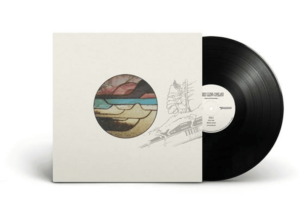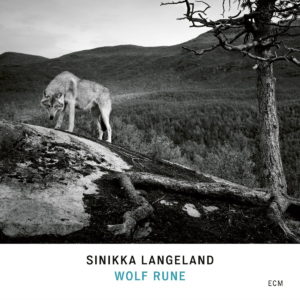„… and then you’re left in this wonderful area of floating which i love so much“ (David Darling, 1994, in that old radio show)
THE FIRST HOUR
Pino Palladino & Blake Mills: Just Wrong (from Notes With Attachements) / Thomas Stronen, Marthe Lea, Ayumi Tanaka: Varsha (from Bayou) / Sinikka Langeland: Wolf Rune (from Wolf Rune) / Simon Goff: Wooden Islands (from Vale) / Nik Bärtsch speaking / Nik Bärtsch: Modul 55 (from Entendre) / Ballaké Sissoko: Kora (from Djourou) / Daniel Lanois: Every Nation (from Heavy Sun) / Valerie June: Stardust Scattering (from The Moon and Stars: Prescription for Dreamers) / Balmorhea: … (from The Wind)
THE SECOND HOUR
Sternzeit – / A Winged Victory for the Sullen: Total Perspective Vortex (from Invisible Cities) / Daniel Lanois: Under The Heavy Sun & Mother’s Eyes (from Heavy Sun) / Lana del Ray: Chemtrails over the Country Club (from Chemtrails Over The Country Club) / Floating Points, Pharoah Sanders, London Symphony Orchestra: Movement 7 (from Promises) / Joshua Abrams speaking* / Natural Information Society with Evan Parker: Part III (from: Descension (Out Of Our Constrictions – out now on Aguirre Records, promoted in Germany at least, by Werner and Klaus, no kidding) / Balmorhea: some more quiet moments from The Wind)
Joshua Abrams (transcript of his special „solo speech“): „At the time of this recording we had performed descension (Out of Our Constrictions) 17 times in concert over a period of 5 months. i wrote the music in February of 2019 for the current touring incarnation of Natural Information Society made up of Lisa Alvarado, Mikel Avery, Jason Stein & myself. Lisa plays harmonium amplified with effects, Mikel – drums, Jason Stein – bass clarinet & i play guimbri. The guimbri is a 3 string bass lute sometimes called a sintir or a hajhouj. It is Gnawan instrument that can be heard in sacred & secular music. I like to think of the guimbri as a sophisticated form of soundmaking technology for focusing & guiding concentration.
The music i write for Natural Information Society is interwoven & multilayered. we are all weaving a sound together. With time & experience performing the piece we find new paths, resting places & occasional detours. it is the woven nature of the composition that gives descension (Out of Our Constrictions) its hypnotic qualities. The music encourages the band’s members to find variation & embellishment & is written with room for mutability & improvisation.
From time to time we have the pleasure of having guests join the group. when we last played in berlin, a couple days before this recording, Tony Buck, Magda Mayas & Theaster Gates all joined us at Arkaoda. other guests have included Chris Abrahams, Josh Berman, Hamid Drake, Alexander Hawkins, Tomeka Reid, Dave Rempis & Helge Sten. In most cases guests are free to improvise along with the group and respond to the vibration and context of the piece (music)
Evan Parker needs no introductions for his contributions & innovations to free improvisation, the saxophone & music in general. Far be it for me to tell him what to play or say. he’s a free agent. It is always a challenge & an honor to try to rise to what he brings to the music. What you will hear is side C of a recording from a concert we presented at Cafe OTO in London. The piece is about 1/2 way through a 70 something minute performance. The music is opening up, Jason is soloing a little, trying to catch up to Evan and the band is fully in. CAFE OTO is one of the group’s favorite places to play & this night was no exception. The audience was crowded & the room was full of good energy bouncing off the walls. playing the concert was a thrilling experience & and the hang (was) a fine time to boot.“ (translated by Deepl. in comment 3)
THE THIRD HOUR
This theme hour on DAVID DARLING will be quite a surprise. Deep in the archives Odilo C. found two portraits I did about the music of the late composer and cello player, from the years 1994 and 2001. – what a joy, to listen once more to Darling’s voice and musical confessions, not to forget the days in the studio with Manfred Eicher working on „Cello“. The second show has the better title: „Mr. Darkwood und die Langsamkeit der Steine“, but I will broadcast „Das Herz der Dunkelheit“, which is more centered around his primal inspirations, with music mainly from the solo cello albums JOURNAL OCTOBER and CELLO. And some excerpts from Darling‘s duo album with Terje Rypdal, EOS, and his album as band leader, CYCLES. 20 years of great achievements, produced by Manfred Eicher between 1979 und 2000. Here the old show in its entirety, without introductory and closing words from the radio broacast yesterday …
THE FOURTH HOUR

Beverly Glenn-Copeland (from Keyboard Fantasies)
Various Artists: Made To Measure, Vol. 1 (Minimal Compact)
Die Welttraumforscher: two tracks from DIE RÜCKKEHR DER ECHTEN MENSCHEIT: DIE JAHRE 1981-1990
Grandaddy: He‘s Simple, He‘s Dumb, He‘s the Pilot (from The Sophtware Slump….on a wooden piano)
Die Welttraumforscher: two tracks from WIR ARBEITEN FÜR DIE NÄCHSTE WELT: DIE JAHRE 1991-2012
Various Artists: Made To Measure, Vol. 1 (Aksak Maboul)
Beverly Glenn-Copeland (from Keyboard Fantasies*)
V.A. – Soul Jazz Records presents Studio One Dub Fire Special
*Re-release of Beverly Glenn-Copeland’s rural Canadian suite for DX7 and TR707 …keyboard fantasies… with new carefully reconstructed glasswork design by Alan Briand. Beverly Glenn-Copeland is already known amongst collectors and music heads for two sought-after albums of folky jazz in the key of Joni. But it was this album, originally self-released on cassette in 1986 that really caught our attention. The album, entirely recorded on DX-7 and TR-707, lies somewhere between digital new-age and (accidentally) early Detroit techno experiments. The inimitable style of BGC here is both peaceful and meditative while simultaneously rhythmic and bass heavy. The album was recorded in the northern Canadian town of Huntsville where BGC was living at the time and is a beautiful fusion of personal vision, technology and place.
THE FIFTH HOUR (PART 1)
Eduardo Ramos: Vocacion Revolucion / Groupo Mounmental: Hasta Los Cuantas / Los 5 U 4: Solo Esta Musica / Grupo de Experimentacion Sonora del ICAIC: Concion Con Todos / Orquestra Los Van Van: Yo Se Que Van Van / Grupo Monumental: Nadia Se Siente Cansado / Orquestro Ritmo Oriental: Maria, Baila El Son / Juan Pablo Torres Y Algo Nievo: Rampe Cocorioco (all tracks from the Soul Jazz Records compilation: V. A. – Cuba Music And Revolution – Culture Clash in Havana Cuba – Experiments In Latin Music Vol. 1)*
THE FIFTH HOUR (PART 2)
Omar Khorshid (from Omar Khorshid with Love)**
Ayalew Mesfin: Mot Aylerim (from Tewedije Limut)
Marcos Resende & Index: My Heart (from Marcos Resende & Index)
*Like Manna from the heavens, this superb collection heralds in the New Year and has to be one of the most significant compilations for many a decade. Released as both a heavyweight 3 x vinyl LP and deluxe 2xCD set, this Soul Jazz Records album is the culmination of some 20 odd years of research and crate-digging by compilers Gilles Peterson and Stuart Baker. Featuring a number of legendary Cuban artists who flourished in the 70s and 80s, for example Los Van Van, Grupo Irakere and Pablo Milanés,alongside other lesser-known performers, such as Grupo De Experimentación Sonora Del ICAIC, Grupo Monumentaland Orquesta Ritmo Oriental, who remain unknown outside their native country, virtually none of the tracks appearing on the collection have ever been heard outside of Cuba.
** „With Love“ released by the Beirut-based Voice of Lebanon label in 1978 is a testament to Omar Khorshid’s greatness and encapsulate the unique sound of his guitar playing over modern arrangements establishing him as one of Arabic music’s true innovator. Featuring reworkings of such favourites as Mohamed Abdel Wahab’s „Ahwak“, Farid El-Atrache’s „Hebbina Hebbina“ (a Brian Eno Favourite), and the Rahbani Brothers‘ „Rahbaniyat“, the album is a fascinating example of modern arabic music that aimed at fusing traditional influences with the more contemporary ones, and has become highly sought-after by lovers of this Middle Eastern sounds around the world.“




